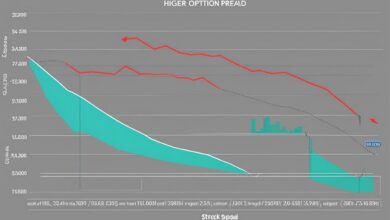Advanced Calendar Spread Adjustments: Optimizing Strategy Flexibility

Introduction
Calendar spreads are a popular options trading strategy where you buy and sell options of the same type (calls or puts) with identical strike prices but different expiration dates. This strategy leverages time decay and volatility differences between short-term and long-term options to generate profit.
Adjustments in volatile markets are crucial for maximizing profitability. By adapting to market conditions, you can optimize your calendar spread strategy, manage risks more effectively, and enhance potential returns.
In this article, you will learn:
- The fundamentals of calendar spreads
- Advanced techniques for adjusting these spreads
- Strategies to optimize calendar spreads in volatile markets
- Real-world case studies illustrating successful adjustments
This comprehensive guide aims to provide you with the tools to master advanced calendar spread adjustments, enhancing your strategy flexibility in various market scenarios.
Recap: Calendar Spreads
Calendar spreads are a strategic options trading approach where you buy and sell options of the same type (calls or puts) with identical strike prices but differing expiration dates. This strategy leverages time decay and differences in implied volatility between short-term and long-term options.
Mechanics of Long and Short Positions
In a calendar spread, you:
- Buy a longer-term option: This longer-dated option retains its value over time.
- Sell a shorter-term option: The shorter-term option decays faster, allowing you to profit from time decay (theta).
Importance of Theta and Vega
Understanding the roles of theta and vega is crucial:
- Theta: Measures how an option’s price decreases as expiration approaches. Calendar spreads benefit from positive theta due to the rapid decay of the short position.
- Vega: Indicates sensitivity to changes in implied volatility. Calendar spreads tend to gain value with rising volatility, making them effective in volatile markets.
By mastering these elements, you can optimize your use of calendar spreads to navigate various market conditions efficiently.

Advanced Techniques for Adjusting Calendar Spreads
1. Rolling the Short Leg
Process and Timing for Rolling the Short Leg
Rolling the short leg in a calendar spread involves closing the existing short position and opening a new one with a later expiration date. This adjustment can be executed when you notice that the current short option is approaching expiration or when its theta decay has maximized its premium income potential.
To roll the short leg:
- Monitor Theta Decay: Keep an eye on the rate at which time decay (theta) is eroding the value of your short option.
- Evaluate Market Conditions: Assess whether market conditions, such as volatility levels or underlying asset movements, warrant extending the trade.
- Execute Roll: Close the existing short option and simultaneously open a new short position with a further-out expiration date. This can often be done for a net credit, providing additional income.
Benefits of Extending the Life of a Calendar Spread
Rolling options to extend the life of your calendar spread offers several advantages:
- Increased Premium Income: By continuously selling new short-term options, you can collect more premium over time.
- Enhanced Flexibility: Rolling allows you to adapt your strategy to evolving market conditions, maintaining your position even if market dynamics change.
- Risk Management: Extending the trade provides more opportunities to adjust other aspects of your spread, such as strike prices, allowing for better risk management.
This technique harnesses the theta advantage by capitalizing on rapid time decay in short-term options while maintaining long-term positions that retain their value. It’s particularly beneficial in volatile markets where frequent adjustments are necessary to capture premium income effectively.
Through rolling the short leg, you can optimize the profitability of your calendar spreads and maintain strategic flexibility amidst varying market conditions.
2. Adjusting Strike Prices
Adjusting strike prices in a calendar spread, a type of options spread, can significantly impact profitability. Market trends and conditions often dictate whether you should make an upward or downward adjustment.
Upward Adjustment
If the market is trending bullish, consider raising the strike price of the short leg. This adjustment captures additional premium income and increases delta exposure, maximizing gains if the underlying asset continues to rise.
Downward Adjustment
In bearish conditions, lowering the strike price aligns your position with market sentiment. This strategy helps to maintain a positive theta advantage while optimizing the potential for profitable premium capture.
Examples:
- Rolling Short Leg: Suppose your initial calendar spread has a short leg at $100 strike and market conditions turn bullish. Rolling options to a $105 strike can better align with upward trends.
- Combining Strategies: Integrate vertical or diagonal spreads with adjusted strike prices to capture broader market movements and enhance strategy flexibility. For instance, using a covered put strategy along with adjusting strike prices can provide more control over your investments.
Adjusting strike prices ensures that your calendar spread adapts dynamically, optimizing returns in various market scenarios while also providing an opportunity to explore other options trading strategies that may suit your investment style better.
3. Adding Additional Spreads to Your Strategy
Incorporating additional calendar spreads at different strike prices enhances your strategy’s flexibility, capturing a broader range of price movements. This advanced technique allows you to:
- Diversify Risk: By adding multiple spreads, you spread your risk across various strike prices and expiration dates.
- Maximize Premium Income: Each additional spread can generate more premium income, leveraging the theta advantage.
- Adapt to Market Conditions: Adjusting strike prices or rolling short options can be tailored to current market trends, providing greater opportunity for profit.
Consider deploying a double calendar spread, which involves placing two calendar spreads at different strike prices. This setup offers increased potential for profitability in volatile markets while maintaining a balanced risk profile.
4. Transitioning to a Diagonal Spread: A Bullish/Bearish Approach
Transitioning from a calendar spread to a diagonal spread can be an effective way to adjust your strategy based on market outlooks. A diagonal spread involves buying and selling options with different strike prices and expiration dates.
Advantages of Diagonal Spreads:
- Rolling Short Leg: By rolling the short leg, you can adapt to changing market conditions and capture additional premium income.
- Adjusting Strike Prices: Adjusting strike prices in a diagonal spread allows for better alignment with market trends, providing greater delta exposure.
- Theta Advantage: The combination of different expirations helps to maximize the theta advantage while managing risk.
- Bullish Transition: For a bullish market outlook, you can adjust the lower strike price upwards, allowing for potential gains as the underlying asset appreciates.
- Bearish Transition: In a bearish scenario, lowering the strike price of the short option provides protection against declining prices.
Key Techniques:
- Diagonal Spread Adjustments: These adjustments offer versatility in managing positions, enabling traders to respond dynamically to market movements.
- Premium Income: The structure of diagonal spreads often results in higher premium income due to the difference in strike prices and expirations.
Understanding these advanced adjustment techniques can help optimize your trading strategies, offering flexibility in both bullish and bearish markets.

Optimizing Calendar Spreads for Volatile Markets
1. Managing Implied Volatility Levels Effectively
In options trading, implied volatility (IV) is very important. When it comes to calendar spreads, managing implied volatility during times of high volatility becomes even more crucial.
Monitoring Implied Volatility
- Continuous Monitoring: Keeping a close eye on IV levels is essential. High IV can inflate option premiums, making your long positions more expensive but increasing the value of your short positions.
- Market Sentiment Analysis: Use tools and platforms like Thinkorswim or TradingView to understand market sentiment and predict potential changes in IV.
Adjustments Based on Implied Volatility
- Rolling the Short Leg: In a high implied volatility environment, consider rolling the short leg to later expirations to capture additional premium. This can help offset the increased cost of the long leg due to elevated IV.
- Adjusting Strike Prices: If IV spikes, adjusting strike prices might be necessary. Shifting the short strike closer to the current price can provide better premium capture while maintaining delta-neutrality.
Strategies for High Volatility
- Widening the Spread: To reduce risk in volatile markets, widen your calendar spread by selecting strikes further apart. This decreases gamma risk and provides a broader profit zone.
- Incorporating Additional Spreads: Adding another calendar spread at a different expiration or strike can help balance out potential losses from increased IV on one side of your position.
Practical Example
Imagine you have a calendar spread with a long call at a $50 strike expiring in three months and a short call at the same strike expiring in one month. If IV surges, roll the short call to a later date (e.g., two months out) to capture higher premiums. Alternatively, adjust the strike price if you expect continued high volatility.
The key is to be proactive instead of reactive. Continuously reassess your position as market conditions change. Tools like OptionNet Explorer or OptionVue can help visualize and test these adjustments before executing them live.
By effectively managing implied volatility levels, you optimize profitability while reducing risks associated with sudden market swings.
2. Maximizing the Impact of Time Decay on Your Position
Leveraging time decay, or theta, is crucial when managing calendar spreads. To maintain position integrity as expiration approaches:
1. Monitor Theta Sensitivity
Regularly track the theta value of your options to understand how much value the short leg loses daily.
2. Adjust Close to Expiration
Adjust positions as the short option nears expiration to capitalize on accelerated time decay without exposing yourself to excessive risk.
3. Select Optimal Expirations
Choose expiration dates that maximize theta decay while still allowing flexibility for adjustments.
Strategies for adapting during high implied volatility periods include:
- Shorter-Term Options: Utilize shorter-term options in a high implied volatility environment to exploit rapid time decay.
- Stagger Expirations: Implement staggered expirations to manage implied volatility during high volatility periods and enhance profitability.
By focusing on these strategies, you can optimize the effects of time decay and maintain a robust position throughout varying market conditions.
Case Studies: Real-World Applications of Advanced Calendar Spread Adjustments
1. Capitalizing on Stability with a Well-Executed Calendar Spread
In stable market conditions, a well-executed calendar spread can serve as an effective strategy for consistent income generation. For instance, consider a scenario where the underlying asset is relatively stable and shows minimal price fluctuations. Here’s how you can apply advanced adjustments:
A. Establishing the Spread:
- Buy a long-term call option with an expiration date several months away.
- Sell a short-term call option with the same strike price but a nearer expiration date.
B. Monitoring Theta and Vega:
- Emphasize the theta (time decay) advantage of the short-term option.
- Keep an eye on vega to understand how changes in implied volatility impact your position.
C. Rolling the Short Leg:
- As expiration approaches for the short-term option, roll it forward to another near-term expiration.
- This adjustment helps capture additional premium while maintaining the structure of your calendar spread.
D. Adjusting Strike Prices:
- If the underlying asset’s price starts shifting within its stable range, consider adjusting strike prices to enhance delta exposure and optimize returns.
For example, if you initially established a spread at a strike price of $50, and the asset remains around this level, rolling the short leg multiple times allows you to consistently capture premium through time decay without significant directional risk. This technique exemplifies how advanced calendar spread adjustments can generate steady income in stable market conditions.

2. Navigating High Volatility through Dynamic Adjustments
High volatility markets require agile strategies to manage risk and capitalize on rapid price fluctuations. Dynamic adjustments in calendar spreads can help you adapt to these conditions effectively.
Techniques for Managing High Volatility
- Rolling Short Options: Extend the expiration of your short options to capture increased premiums from higher volatility.
- Adjusting Strike Prices: Move the strike prices closer or further from the current price to balance risk and potential rewards.
- Adding Additional Spreads: Incorporate additional calendar spreads at varied strike prices to capture broader market movements.
Practical examples showcasing stable vs. volatile market conditions illustrate how these techniques ensure consistent income generation while managing risk during turbulent times.
Conclusion
Mastering advanced calendar spread adjustments equips you with the tools to navigate various market conditions effectively. By leveraging techniques such as rolling short legs, adjusting strike prices, and incorporating additional spreads, you can enhance strategy flexibility and optimize profitability. The benefits gained from mastering these techniques include:
- Increased Profit Potential: Capitalize on time decay and volatility differences.
- Risk Management: Tailor strategies to current market conditions and mitigate risks.
- Strategic Versatility: Adapt quickly to market changes with dynamic adjustments.
Embracing these advanced methods positions you for success in the complex world of options trading.







